Select Past Capstones
We are delighted to share the capstone projects and theses of past MUSE students. See below for a selection of past capstones.


Greenspace: A yearlong series of public engagement at the UIC Plant Research Laboratory. Greenspace was a yearlong series of 23 public programs at the Plant Research Laboratory (PRL) funded by the UIC Sustainability Fund. The PRL is an underutilized space on campus that is on the brink of demolition. The crux of my project was a case study on how to DIY a plant centered community in a building that is both thematically perfect and deeply difficult to work with. These public programs were interdisciplinary collaborations with local artists, scientists, chefs, and organizations like the Latino Cultural Center. Programs included a hands-on fire cider workshop, lunchtime talk about fungi, a tour at the Art Institute of Chicago, and a dinner party about migration. Through this platform, I wanted to give ownership and agency for community members, especially students, to share their own experiences and knowledge about plants. The goals included fostering a community centered around plants, unleashing a radical creativity of what is possible in a greenhouse space, and exploring what it means to create a contemporary botanic garden removed from imperialistic frameworks. You can learn more about this project at juneahn.me/greenspace.

My capstone project was creating a digital archive in conjunction with the Oak Park River Forest Museum, that documented volunteers’ stories and thoughts from the Economy Shop; a charity thrift store in Oak Park that has been running for 101 years. I have often found volunteer worker stories missing from archives and museums and I wanted to highlight them. I also wanted to highlight the Economy Shop as it is a model of how to treat volunteer workers. I wanted to create a digital space for these stories so they will be easier to access and will last longer than a one-time exhibit in the museum.
The results of the surveys showed that there is a strong sense of camaraderie and friendship among the volunteers. Many of their favorite parts of working at the shop were the people in their department. Many volunteers talked about how they felt they received much more from the shop than they gave. In receiving these surveys, I was able to get a more in depth look at how volunteers at the Economy Shop feel about working there. By creating this digital archive, I have been able to let the public get a glimpse into the Economy Shop and its volunteers.
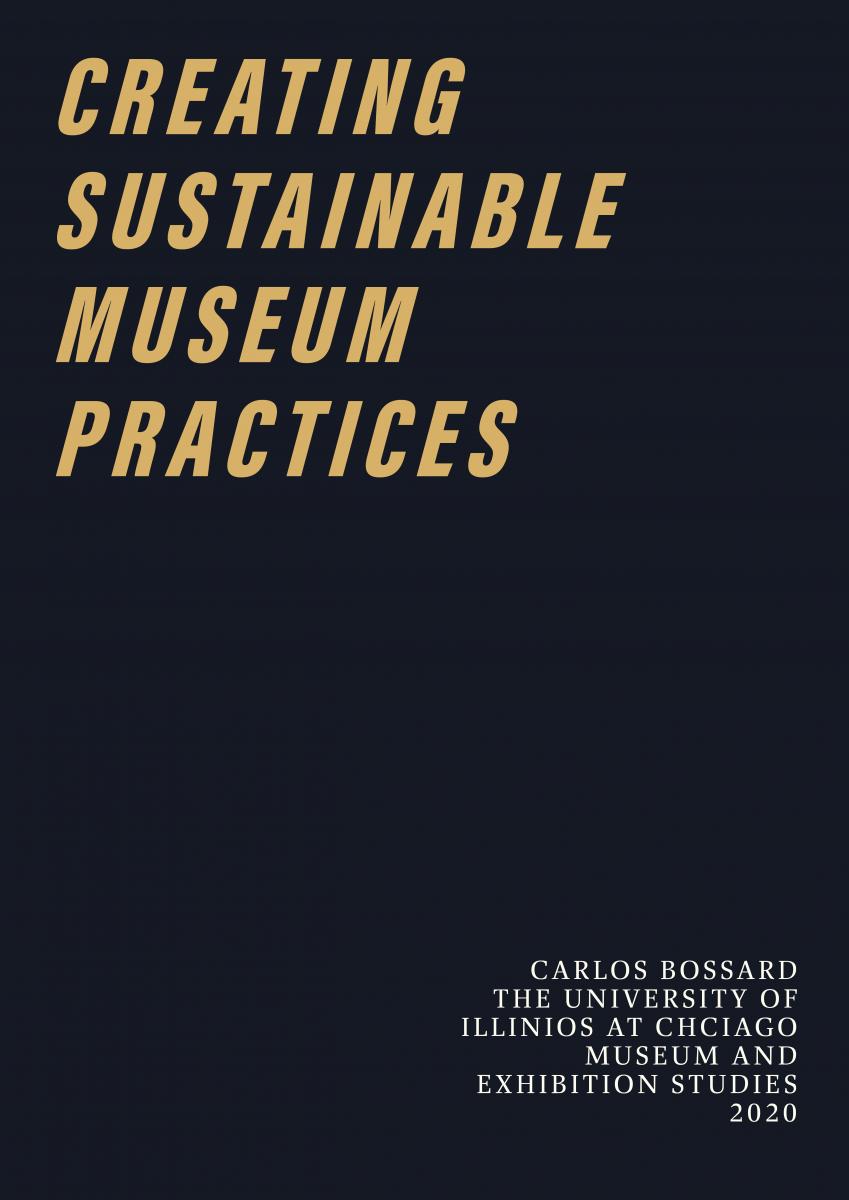
This project addresses museum executive directors and board of directors, to analyze their roles in promoting diverse and inclusive museum practices. The guide, Creating Sustainable Museum Practices, was created to easily share the research to museums big and small. It includes a case study of the Haitian American Museum of Chicago, a culturally specific museum in the Uptown neighborhood of Chicago, whose Founder, Elsie Hector Hernandez, has created a multigenerational, collaborative organization. After, four actions steps that can be taken immediately by executive museum leaders are explained. The researcher, Carlos Bossard, includes a positionality statement and his Capstone Committee’s suggestions to provide his readers with transparency. His guide is the first of two, the second created by his colleague, friend, and research partner, Sheila Navas.

Inching Towards Genocide: Trump’s Persecution of Hispanic Immigration is a cost-free online course on OpenLearn Create which examines the history of the Trump Administration’s policies and practices targeting Hispanic immigration through the United Nations’ Genocide Watch President Gregory Stanton’s Ten Stages of Genocide. In an effort to diversify and contextualize students’ understanding of genocide, the course utilizes examples of the genocides of Rwanda, Cambodia, and Darfur. In each module, students are introduced to a stage of genocide and presented evidence as to whether the Trump Administration has satisfied, or is engaging with, a particular stage. Following each module, students are requested to participate in an ungraded self-reflection activity, which consists of a series of open-ended questions aimed at expanding students’ personal understanding of, and connection with, Hispanic immigration. The objectives of the course are to elevate students’ understanding of the mechanisms for genocide, the interconnectedness of the Ten Stages of Genocide, as well as immigration advocacy groups operating in the United States. Only through knowledge, shared understanding, and activism can we prevent genocide from occurring in the United States of America.
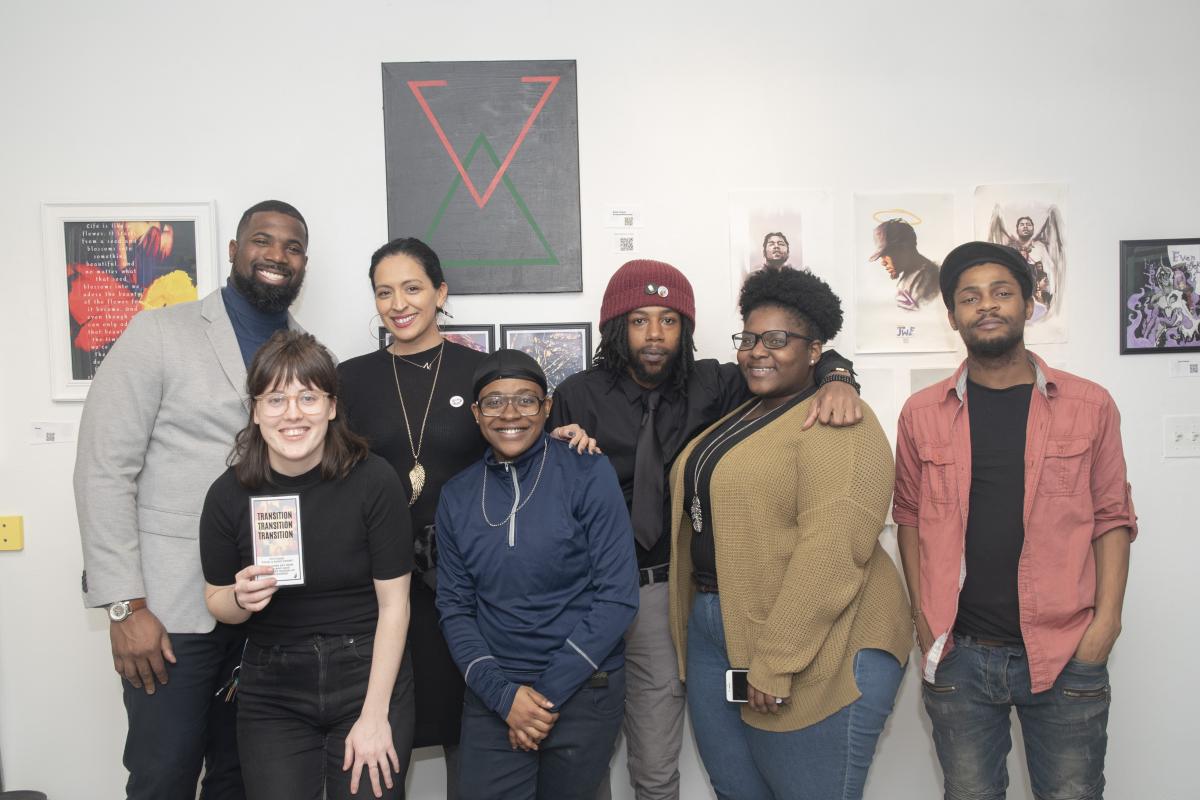
Examining the ways in which power acts on museum partnerships as a force that either fosters or thwarts genuine solidarity and alliance-building, this capstone exhibition, titled Transition, evenly distributed authority between a graduate student researcher (myself), two activists with lived experience of homelessness, and a non-profit that directly serves youth experiencing homelessness. Together, we explored a mode of display grounded in mutual care, openness, and non-hierarchical relationships.
Transition displayed artwork created by students and advocates of One Heart One Soul, a traveling organization that visits drop-in centers, transitional homes, and shelters to connect with youth living unhoused. Curators Kasey White and Zamari Vivens, former students of the program, selected artwork from One Heart One Soul’s archive and paired the visual compositions with audio interviews narrating the artists’ journeys. Our collaboration reimagined exhibition development through the lens of “radical vulnerability,” a practice developed by feminist scholar Richa Nagar that subverts institutional value claims and omniscient objectivity in favor of storytelling, memory, and power redistribution. As such, this capstone offers an example of what can flourish when art spaces share curatorial authority with those participating in activist work. As I conclude, it is in this space of destabilization that innovation and trust occur.
Image by He Shoots Lyfe.

Queer Invisibility In Museums highlights three research-based projects I completed as graduate student in Museum & Exhibition Studies at UIC, all focusing on the disparities in queer representation and inclusion in the museum field, and testing ways to start filling those gaps. Museums and other cultural institutions hold a great deal of power in public perception, whether we recognize it or not. It's important to ask: What are we showing (and hiding from) museum goers about queer history? What are we saying to them? And most importantly, what is this doing to their perceptions of the LGBTQ+ community and its rich history?
I invite museum professionals (and museum lovers) to use Queer Invisibility In Museums as a resource to advocate for more queer visibility in museum exhibitions, collections, and programming. The three projects highlighted in the booklet, grounded in queer theory and accessibility, utilize free online platforms and propose creative sources of inspiration to highlight queerness in museums. The booklet includes three projects of mine: my rogue virtual tour developed for Public Engagement (Spring 2019, Jen Delos Reyes) Searching for Queerness in Hull-House, my work with Liliana Macias for the Goethe-Institut's QUEER AS GERMAN FOLK exhibition developing Mapping Queer Chicago: Past & Present and curating an international playlist for the show, and my presentation, Sexuality Without the Sex: Exhibiting Queer History for Children, on the Youth Exhibitions & Sex Education panel at the 2019 ALMS Queering Memory conference in Berlin. It begins with my working definitions for three key terms--Queer, Accessibility, and Temporality--and concludes with Dreaming of a Sapphic Renaissance--detailing my visions and hopes for the future of queering museums.

Museums have been collecting pop culture materials for decades but using popular media to stage exhibits creates novel challenges in the museum space. Pop culture topics are often well known, and even emotionally and socially significant to members of the public. Pop culture topics – from Star Trek to Major League Baseball – are understood, dissected, and beloved by dedicated fan communities. Fans also build knowledge through community, both online and in person. Museums will have to adapt new strategies for topics that are understood more intimately by potential audiences than exhibits on—say—geology or deep space or Renaissance art. With that in mind, I created a newsletter for distribution at Chicago’s C2E2 that outlined how Chicago cultural institutions were integrating popular culture into their exhibits.
I chose to distribute this at a pop culture convention because I wanted to contrast the ways that fan communities build knowledge—through community-driven events like these conventions—with the top-down approach typically employed by museums. I followed the distribution of the newsletter with an analysis of the feedback I received in order to evaluate the effectiveness of current strategies and imagine what an ideal pop culture exhibit might look like in the future—one that finds a way to combine the intellectual rigor of the traditional museum space with the community-driven and grassroots knowledge-building employed by fandoms.
Image courtesy of Lauren Janik
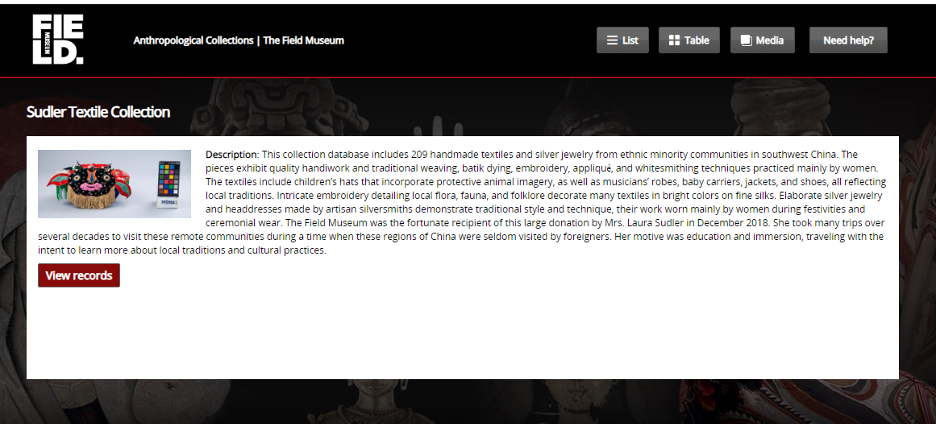
How can museums optimize new or existing technologies to make their collections accessible for broader publics in more ethical and meaningful ways?
Less than 1% of over 40 million objects and specimens at the Field Museum of Natural History ever reach the surface for community engagement. Digitization efforts of cultural material open the basement doors a little wider for open accessibility, address a growing community who are engaging with museums online, and simultaneously help protect and preserve objects for future generations. This capstone project involved digitizing over 200 textiles and jewelry handmade by minority groups in Southwest China to be published on the Field Museum Anthropology Collections web page for open access and digital engagement. In a moment where new accessions are given the most attention, there exists an opportunity to digitize and make them available for broader publics before they disappear into storage. Beyond digitizing a collection, this project lends itself to more comprehensive discourse around how museums are thinking about their own digitization tools and processes, who they are digitizing cultural material for, and why or how they are disseminating stories and information. Are we making space for the right voices to lead these processes?
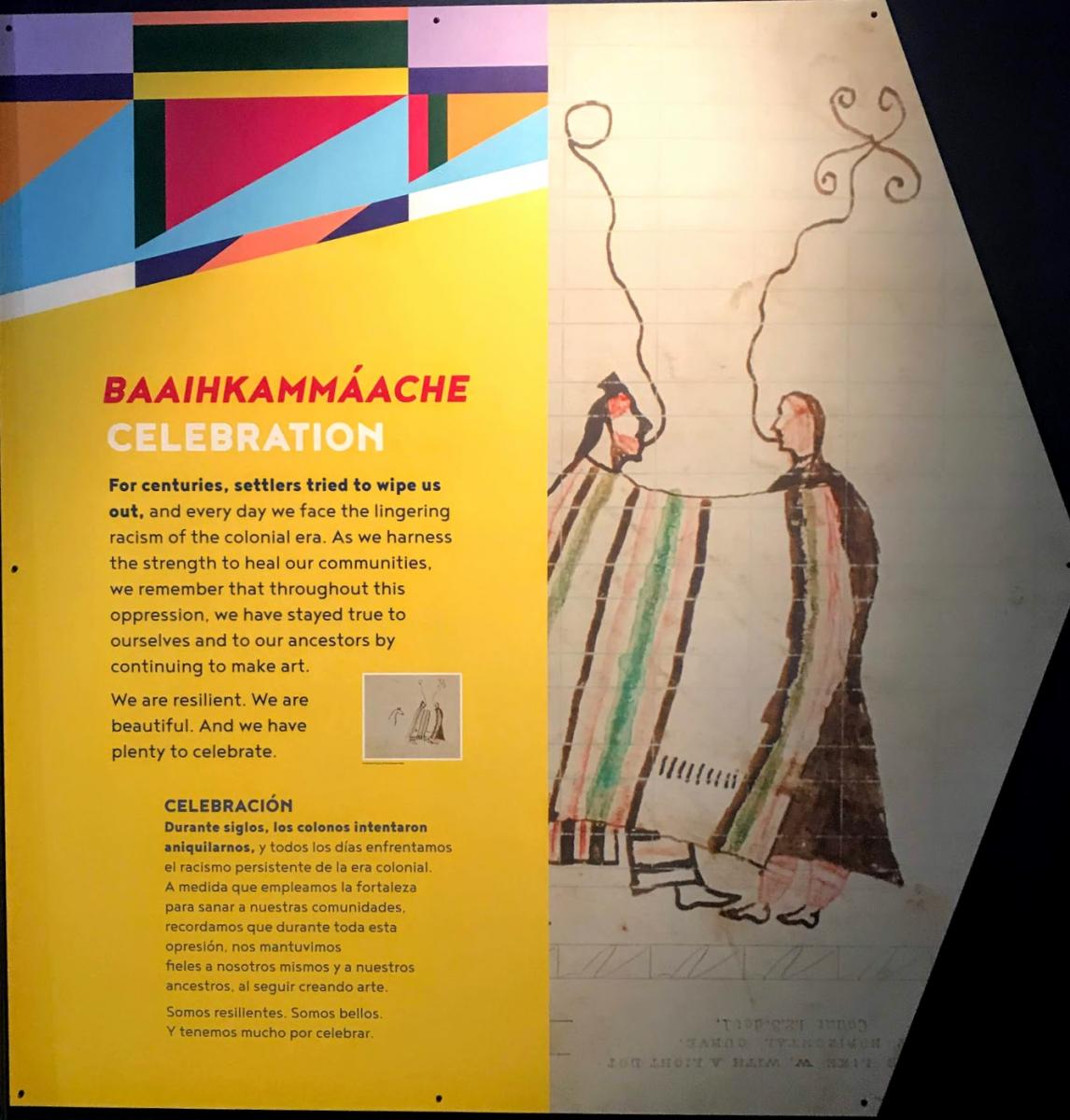
Museum practices of the past have negatively impacted representation of Native people. Past collection practices centered upon the salvaging of “dying races” and the study of Native people to further social evolutionary models. Objects were used to justify colonial endeavors and establish dominance over colonized people, through the claiming of their material culture. Past practices have become grievously embedded within the museum and must be decolonized. In the past, objects were used to further colonial interests and silence non-Western voices in the intent of sustaining a Western, hegemonic order. Today, they should be used to address colonial destruction and to accurately present narratives of various cultural groups.
Art and natural history museums are critically analyzed to discuss the ways in which different institutions contribute to varying modes of misrepresentation. Cultural objects have either been aestheticized by art museums or viewed as specimens of study by natural history museums. Essentially, this investigation seeks to provide suggestions and solutions for better representation, through encouraging Native voice and community inclusion in all museums that contain cultural objects in their collections. Four case studies are analyzed and demonstrate the importance of recontextualizing objects in a manner that refocuses the narrative with a Native lens, rather than an oppressive, Western one.
Photograph taken at the Apsáalooke Women Warriors Exhibition at the Field Museum of Natural History, 2020.
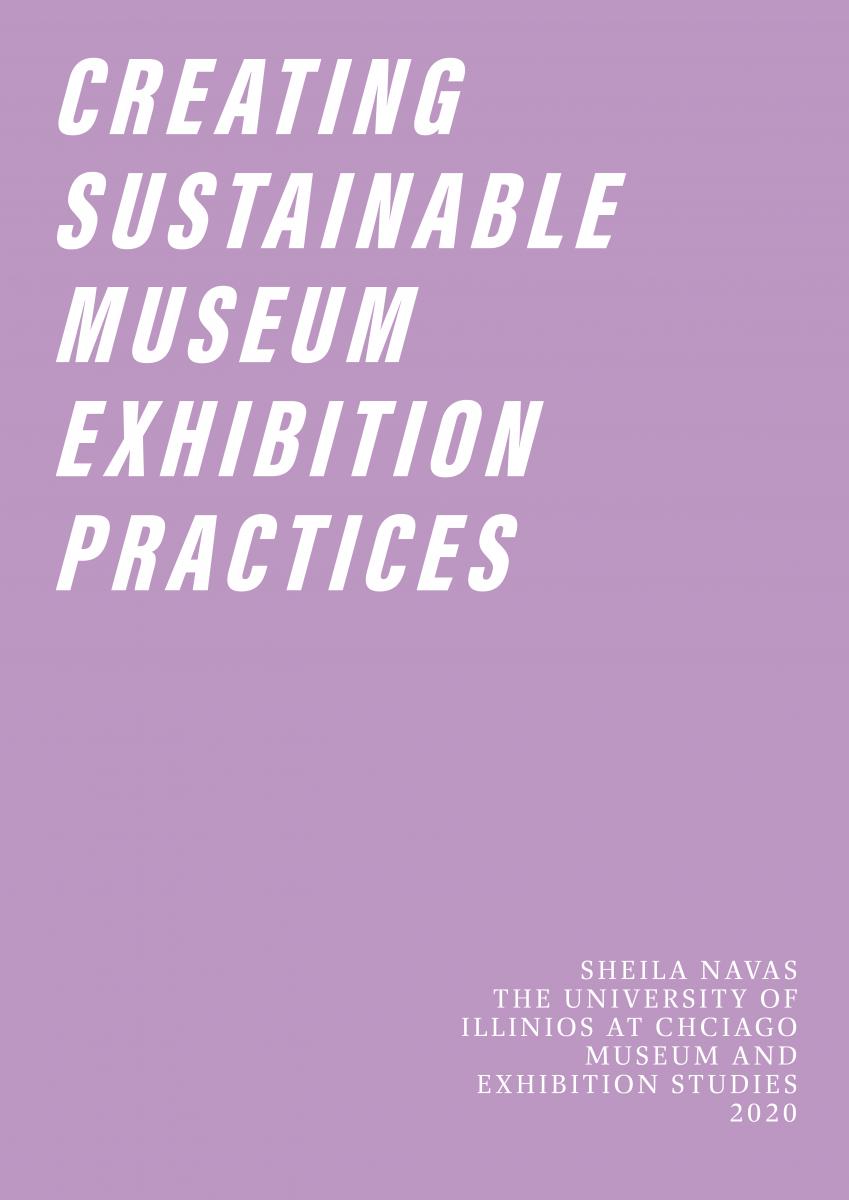
In this guide there are three parts: The first part looks at the research question: How can museums mend relationships between the institution, curators, and artists in order to create more ethical exhibitions? It examines the ethical practices and ideologies behind exhibition practices. We explore the history of curators, ethics within museums, institutional blockades, binaries between the curators and audience, and lastly the audience itself. Here we stress the ideological changes that need to occur in order for the continued success of museums. The second part of the guide follows two interviews; one with Erik Ruin a visual artist from Philadelphia and two from Sam Kirk a muralist from Chicago. These interviews further explore the issues discussed in the previous section through first-hand accounts. The third and final part of this guide suggests a resolution to the research question posed in this guide. We evaluate the ideologies examined in part one; the interviews and their analyses in part two and tries to find the best way to mend relations between curators, artists, and institutions. Also, there are two new suggestions to museums curators on how they can start adopting new practices in order to create more ethical exhibitions.
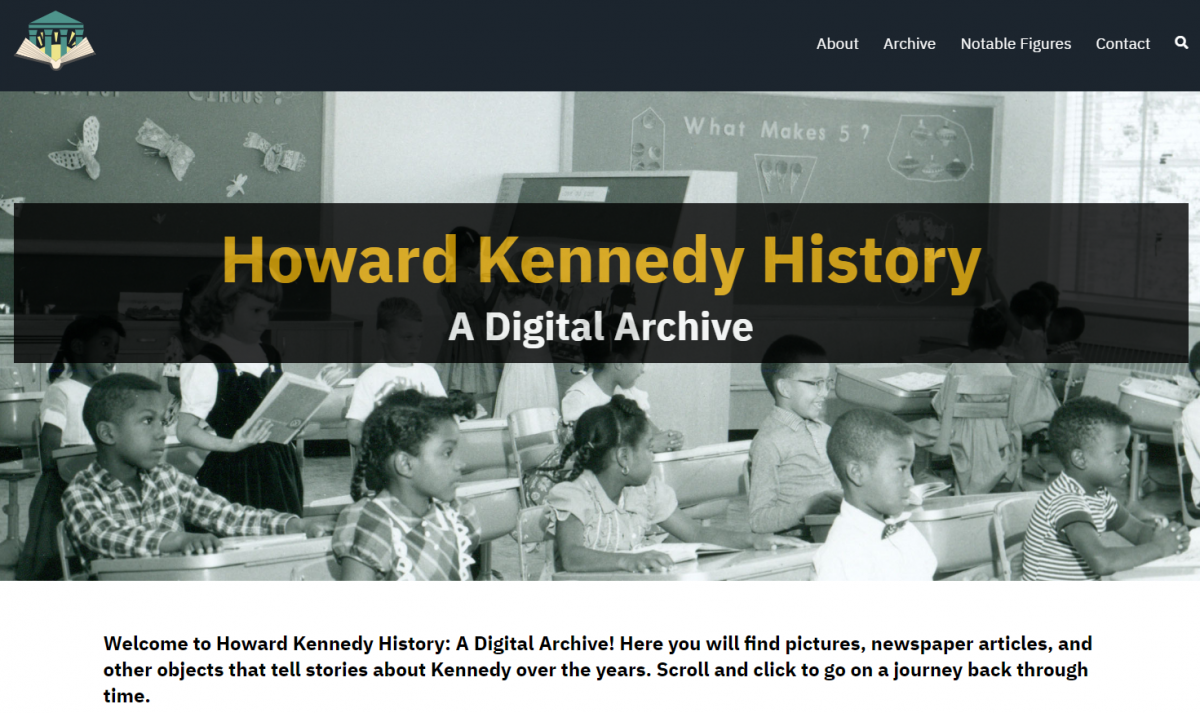
For my capstone project, I built a digital archive that serves to document the histories and memories of those who have either attended or worked at Howard Kennedy Elementary School in the Highlander Neighborhood in North Omaha. My hope is that this archive will help to illuminate the oft-disregarded history of a community of people of color within the city of Omaha. It brings previously difficult to access materials together and makes them available to both students at the school and the wider community. The website that serves as a home for the archive has been constructed with an eye to keeping children engaged and to allow them maximum comprehension. As time goes on, I hope to continue to add more material, as well as creating a page with potential lesson plans involving the archive and suggestions for how to use it in the classroom. To see the website and the over 450 objects it houses, visit howardkennedyhistory.com.
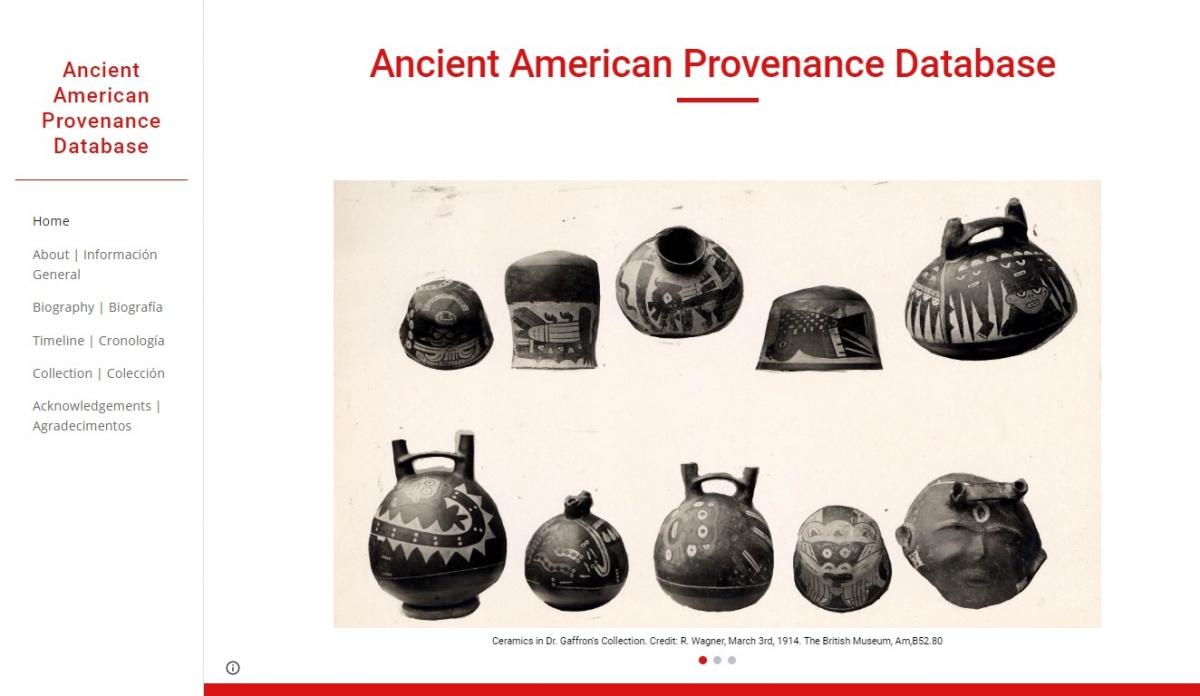
The Ancient American Provenance Database is a bilingual collections database that attempts to reunite collections of ancient American art housed in geographically distant museums. https://sites.google.com/uic.edu/ancientamericanprovenance

Sites of Historical Memory: Using Re-memory to Expose Silence. We are largely unaware of the invisible forces at work that shape both the space we inhabit and our experience of that space. From the entry point of the Confederate monument, Silent Sam, at the University of North Carolina at Chapel Hill, this thesis poses the question: what is the purpose of a site of memory? Using Michel-Rolf Trouillot’s formula of where silences enter in the production of history this thesis interrogates the silences inherent in sites of memory, how they came to be, and the memory strategies that attempt to reckon with them.
This thesis traces the coloniality of power that structures contemporary experiences of space and time, beginning with the attempted placemaking of the Relaciones Geográficas, maps commissioned in 1577 by King Phillip II of Spain, and examining how this placemaking manifests in the racialized space of Silent Sam. This examination continues with an analysis of how attempts to recover memory, illustrated by Unsung Founders, Bond and Freeby Do-Ho Suh and Rumors of War by Kehinde Wiley, often distort and commodify memory. The final chapter argues how the recurrent production of knowledge around the Relaciones Geográficasand protest around Silent Sam demonstrate the recuperative potential of “re-memory.”
Image: Don McCullough, Flickr CC
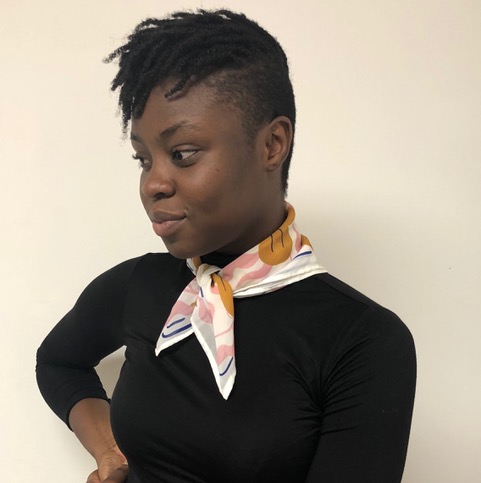
This thesis seeks to discuss Blackness and its social complexities in the art museums in the United States. It looks closely at the changing dynamics following the demands for equity and inclusion in the museum. It opens a dialogue on Blackness in the social imaginary, towards exposing and contextualizing current ideologies about Blackness in the history of the United States and the museum. Consequently, making a case to destabilize ideologies about Blackness, to then re-theorize and create new meanings for Blackness in the social imaginary and consequentially in the museum. It makes central the desire to shift museums from their representational practice into the exploration of Blackness through radical visibility.
This paper also seeks to hold art museums accountable to their roles as purveyors of cultural production and educators. It is urging them to be proactive in shifting the socialized perception of Blackness through the art in their exhibition spaces. It argues that visibility is not enough to reclaim and reimagine Blackness in the museum. Instead, it proposes the uses of counter storytelling to create new meaning and dialogue surrounding Blackness— to reimagining and reshape institutional practice to see Blackness and its complexities in visual media radically.
Image courtesy of Alimot Yusuff.
